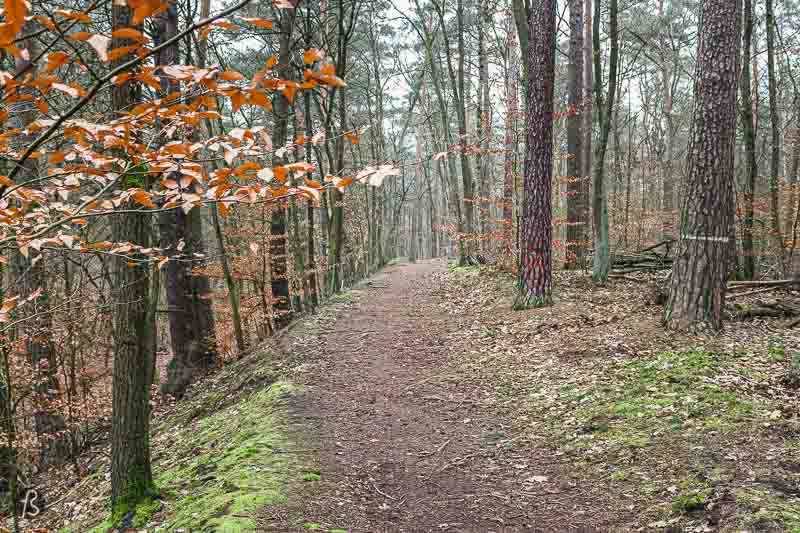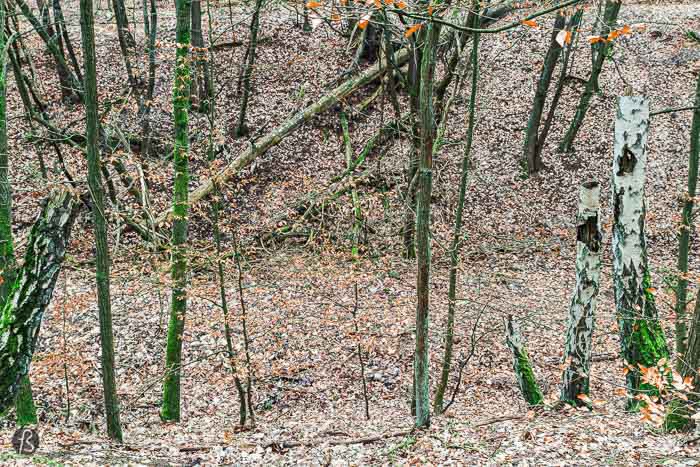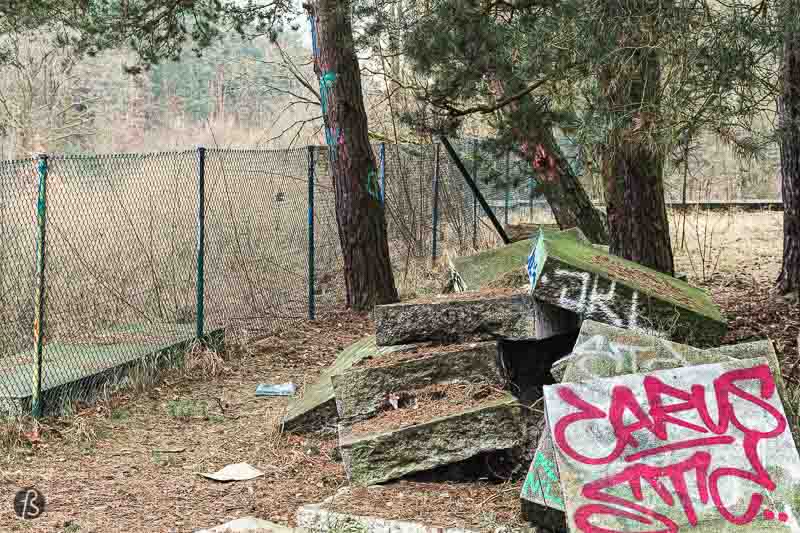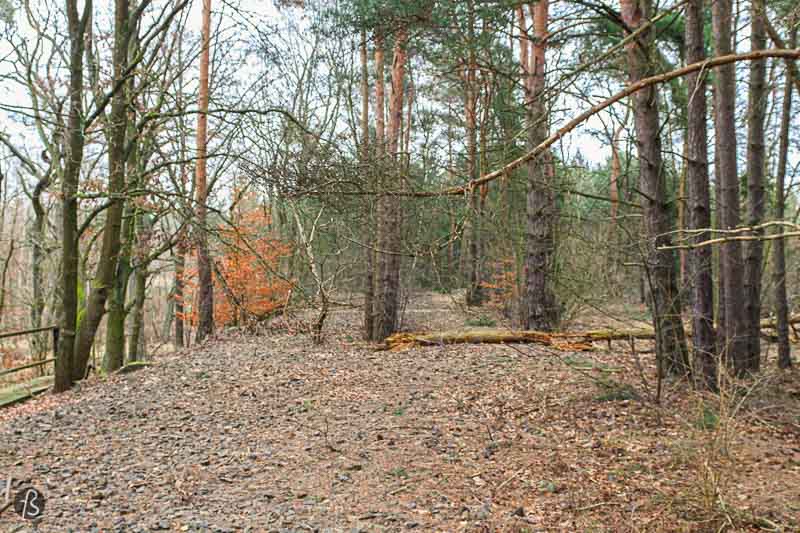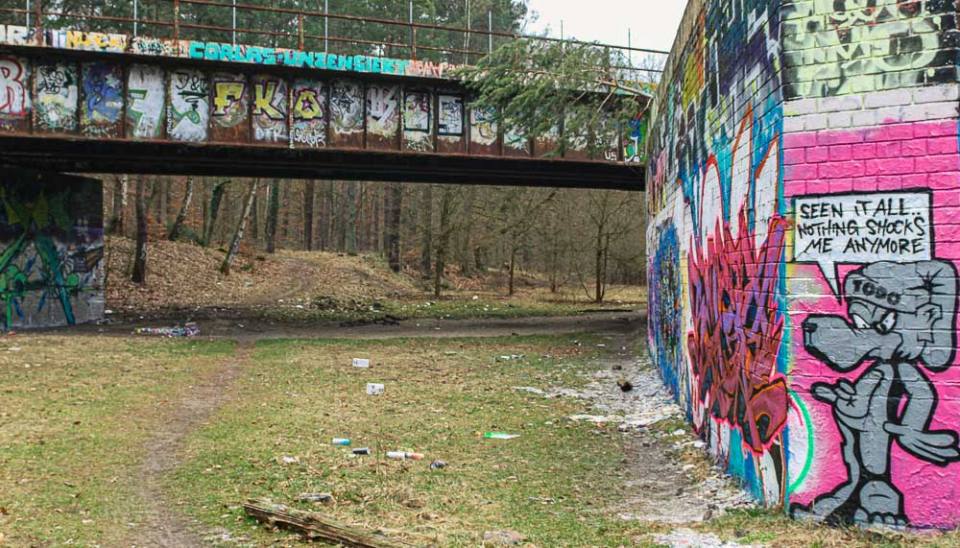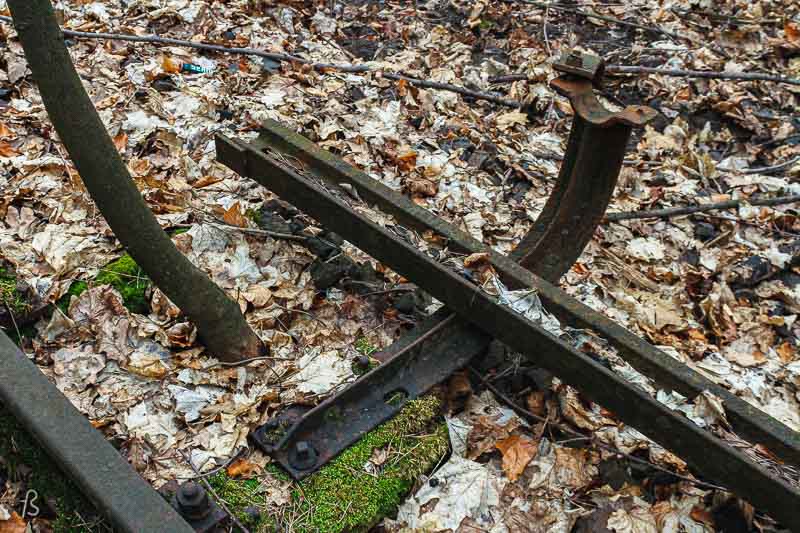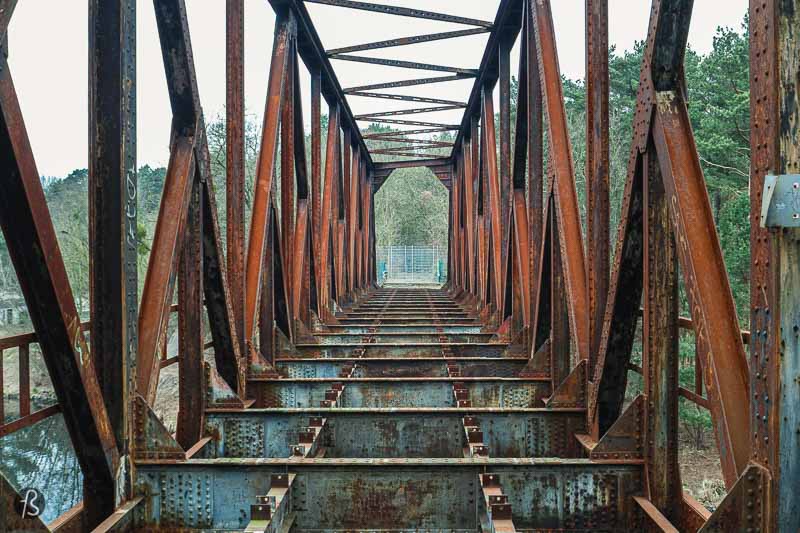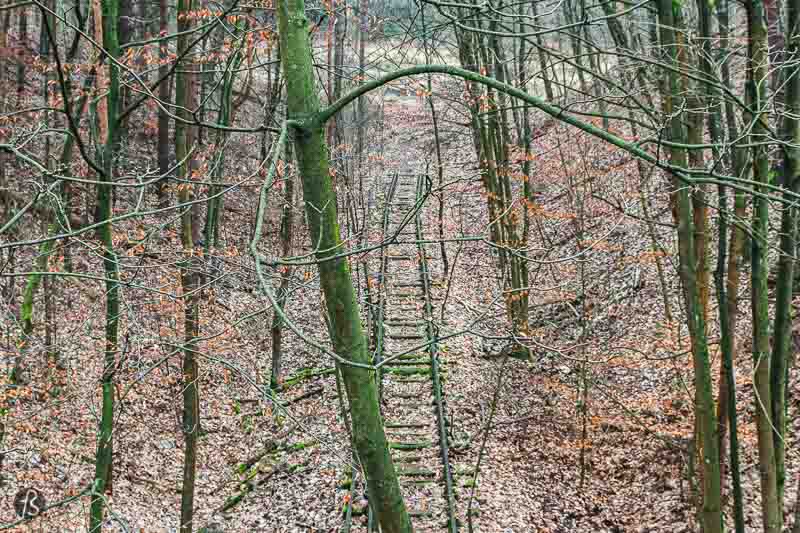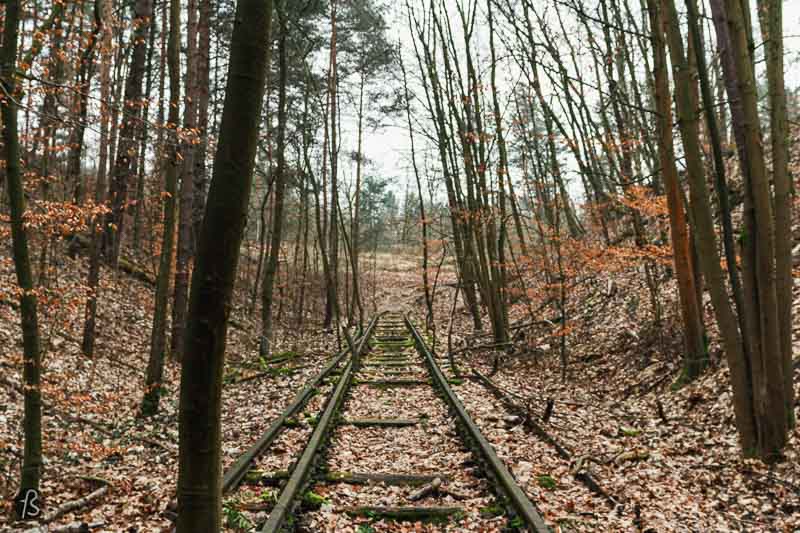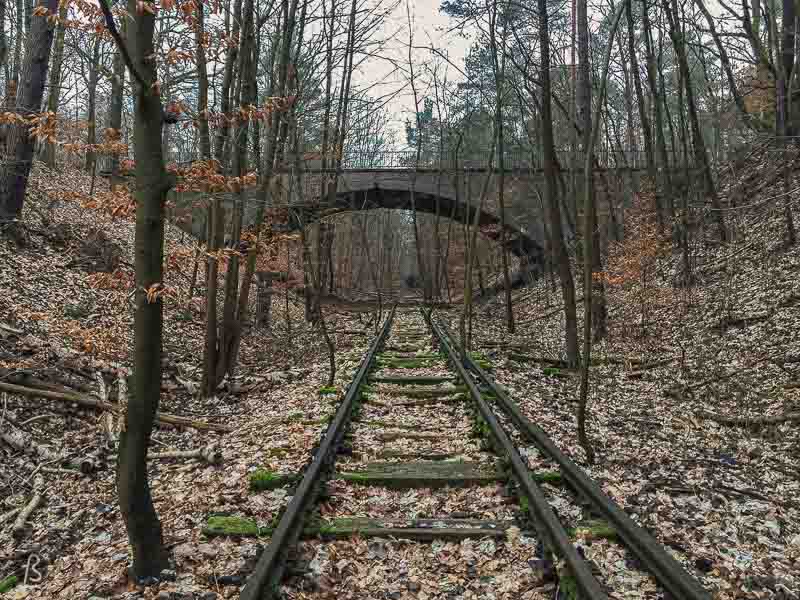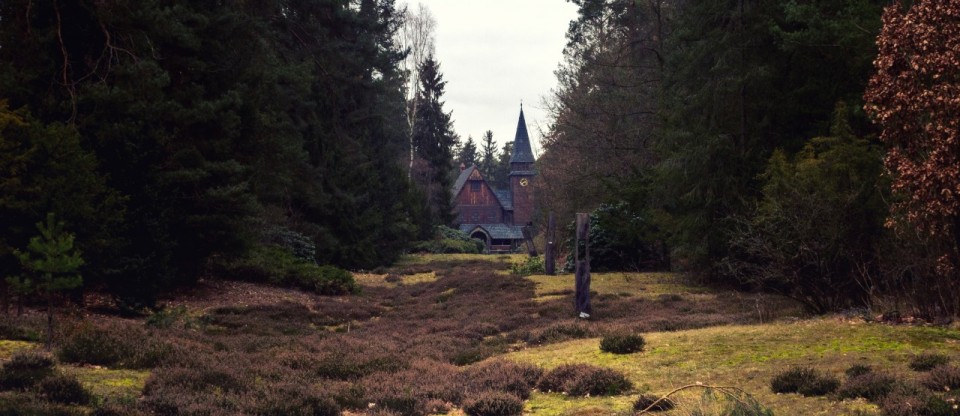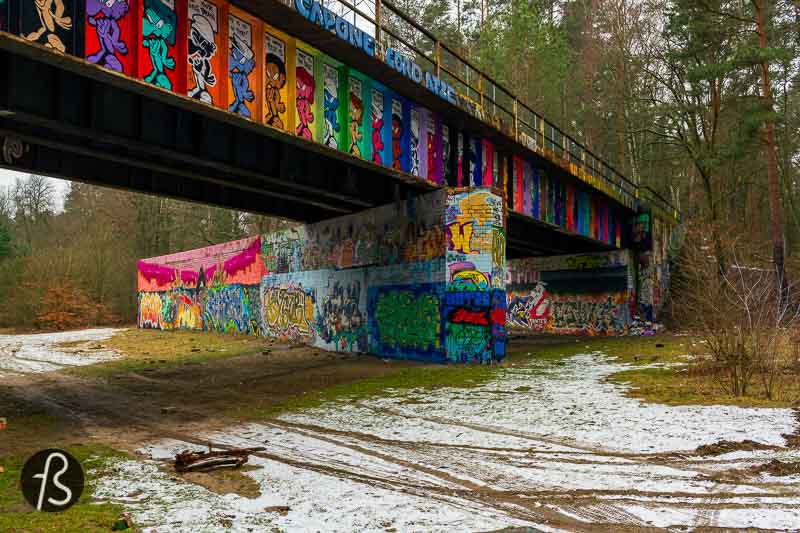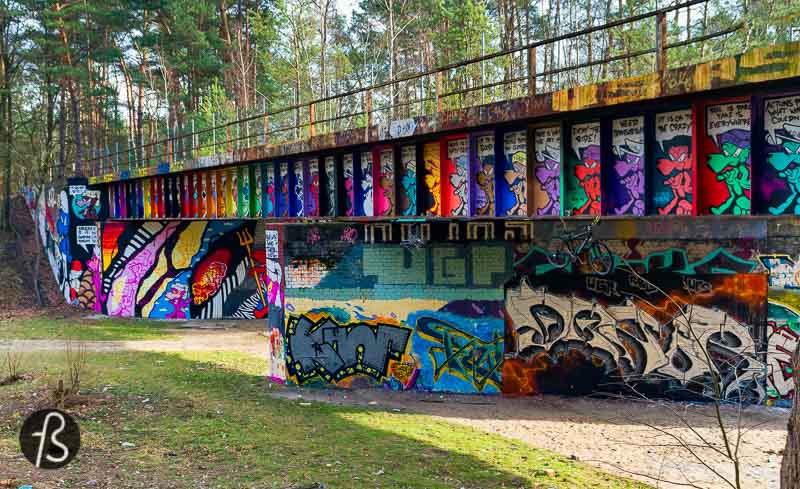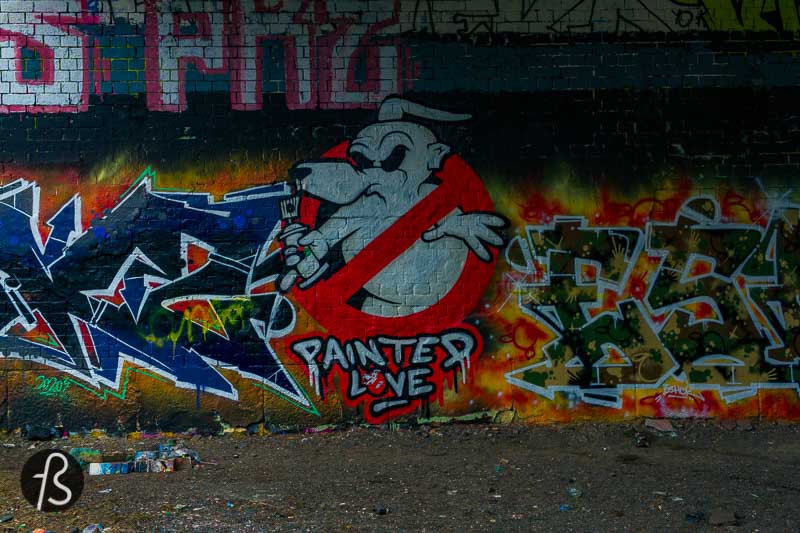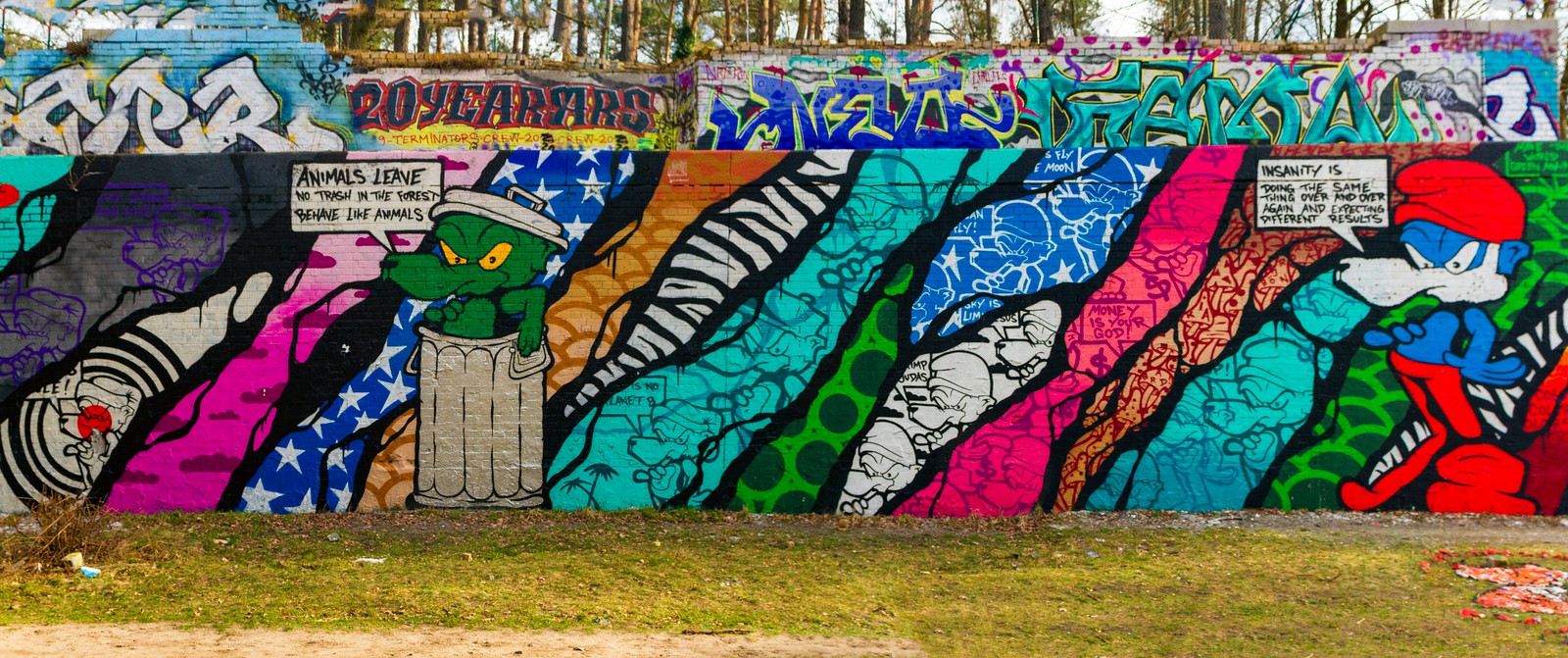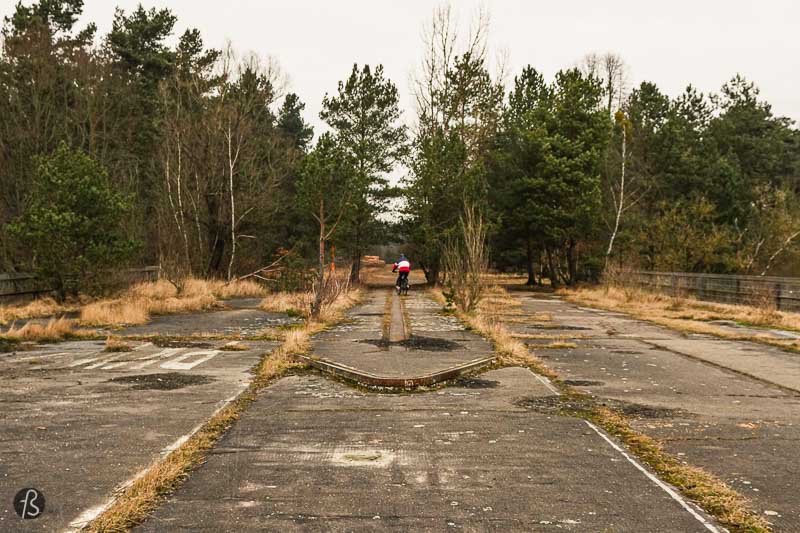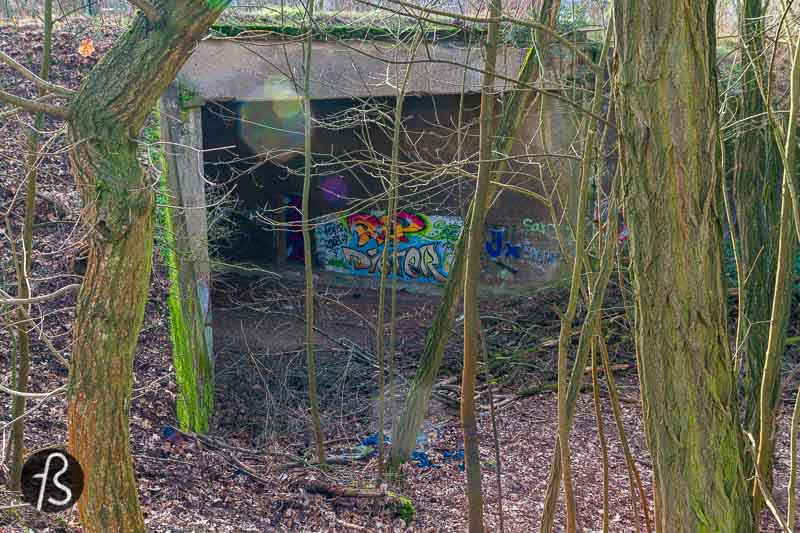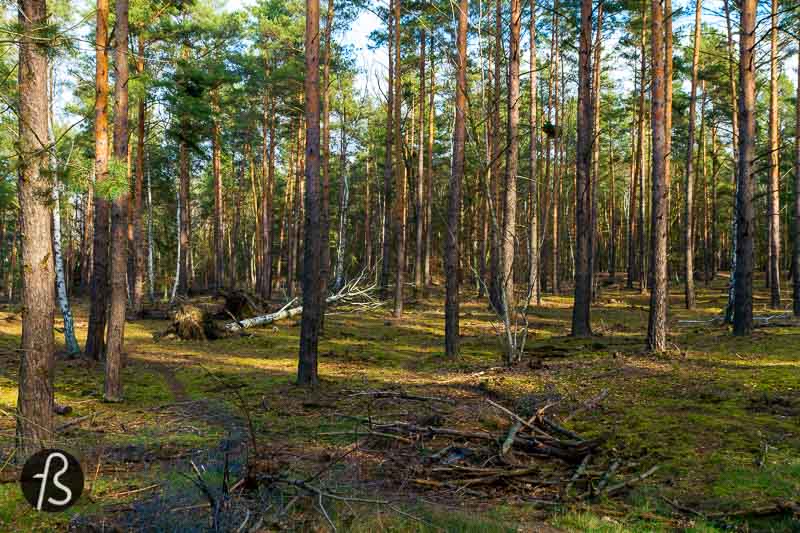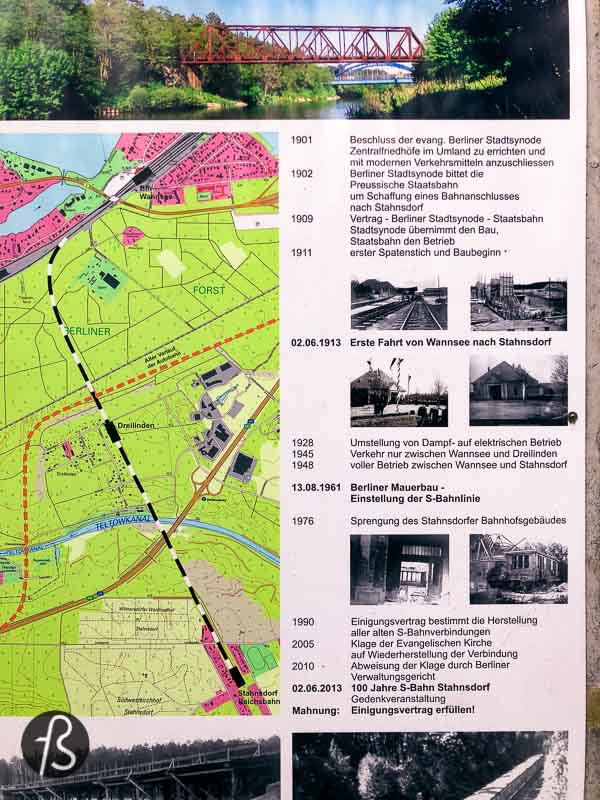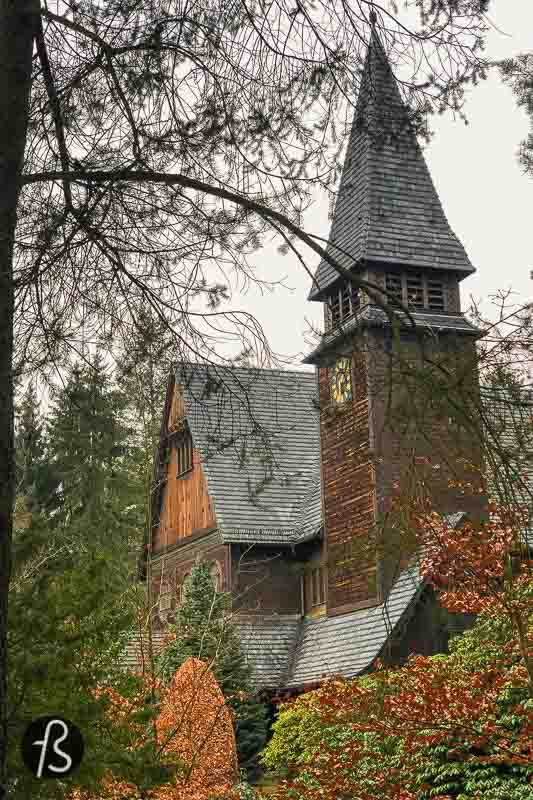Berlin has a vast transport network composed of S-Bahn and U-Bahn lines that cover almost 500 km of tracks across the city. And the town used to have even more tracks, but due to political divisions, world wars and economic problems, some of those tracks were abandoned. One of those is known as Friedhofsbahn, and it used to connect Berlin-Wannsee to Stahnsdorf.
Here we will talk a little bit about the reason why the Friedhofsbahn was built, how it shut down, and why some people want it back.
Also, since this is the same abandoned train track used as a location in Netflix’s series Dark, we will talk about the hike in the forest, following the train tracks the connect the bridge to the church in Dark.
First, a short story lesson about the Friedhofsbahn – the Berlin Wannsee – Stahnsdorf Railway Line
At the beginning of the 1900s, during a time of increasing growth, the cemeteries were moved outside of Berlin. But the transport of the dead to these newly established cemeteries was expensive and, to try to fix this, a rail line was planned. The concept was to create a cheap connection between Berlin and the graves. The church and the Prussian Railway Administration struck a deal, and the work started.
In June 1913, train operations started in a single-track railway connecting Berlin-Wannsee to Stahnsdorf, which received the nickname of Friedhofsbahn – Cemetery Train in German. The train started at the Wannsee station, and it followed southeast until it reached the Dreilinden station, where it headed to cross the Teltow Canal and arrived at the Dreilinden station where you can find one of the largest cemeteries in Europe.
As you can imagine, these trains would carry coffins, mourners, and those who lived close to the train tracks. This sounds unusual for a train track, but it happened so long ago that it feels hard to judge how weird it would be to take a train carrying the dead.
Either way, with the destruction of a bridge over the Teltow Canal during the Second World War, service was reduced and went from Wannsee to Dreilinden. With the end of the war, the bridge was restored, and service was back to normal after 1948.
By 1952, the transport of coffins and the dead stopped, and the Friedhofsbahn became a typical line for a couple of years.
Everything changed again with the construction of the Berlin Wall in the summer of 1961. Since the Friedhofsbahn connected Berlin with Stahnsdorf, a town in Brandenburg which was in East Germany, all service stopped and ended when the railway facilities were dismantled in the 1970s. Back in 1970, the Dreilinden station was demolished and, in 1976, the Stahnsdorf station was blown up.
Around the area, there used to be a highway that, due to the Berlin Wall, was moved. There you could find an East German control point called Grenzübergangsstelle Drewitz-Dreilinden and the West Berlin Checkpoint Bravo. Both were moved southeast when Federal Highway 115 was re-routed to where it is today.
Today, the Friedhofsbahn lays in ruins, and you can still see some pieces of the track if you follow where it used to be. There are bridges where the tracks used to be, and it feels eerie to walk around something like this used to exist in the middle of the forest.
With the German Unification Agreement, it was stipulated that railway likes that were interrupted by the building of the Berlin Wall would be restored. Still, there are no concrete plans to reopen the Berlin Wannsee – Stahnsdorf Railway Line. In 2016, there was a feasibility study commissioned by the municipalities of Teltow, Kleinmachnow, and Stahnsdorf to see how much it would cost to develop the train tracks again. The price would be around 60 to 80 million euros, and it would take close to 10 years of construction for the 11km route. We couldn’t find any information if this will happen or not.
Back in February 2018, we decided to explore this route between Berlin Wannsee – Stahnsdorf. It was a cold weekend in Berlin, but we had a goal to reach the church in the Südwestkirchhof Stahnsdorf, where some of the scenes from the series Dark were filmed. Our idea was to take a scenery route following the Friedhofsbahn, and this is what we did.
Our weekend hike started with a train ride from Neukölln to Wannsee were we went in the direction of the forest and the old Königstrasse. There we started seeing the first signs of the old Friedhofsbahn as track ballasts and some leftover tracks. Walking in the ballast wasn’t as fun as we thought it would be, so we decided to follow it on a woodland path that sits next to the train tracks.
After a few minutes of walking, you are going to reach a bridge over the abandoned train tracks. This is where some of the shots in the first episodes of the series Dark were shot. We took way too many pictures there, and you can see those in the article we wrote explicitly about the bridge in Dark.
A few meters after the bridge, the train tracks come to an end, and you see an empty field. If you walk straight, following where the tracks used to be, you will reach Dreilinden, but we took a right turn because we wanted to see where Checkpoint Bravo used to be.
So, we walked a little more and reached where the Berlin Wall used to be and Checkpoint Bravo on an abandoned autobahn bridge. There you can still see flag poles and words written on the road that told drivers where to stop their cars. There is also the abandoned Raststätte Dreilinden, which used to be a service station and restaurant.
From the abandoned Auto Bahn bridge, we checked our map and realized that there was another bridge close by, so we decided to turn back and head there. A few kilometers later, we found the Königswegbrücke, which used to be on the border between East and West Germany. Next to it, you can see the Mauer Weg trail that follows where the Berlin Wall used to be.
Back in the forest, leading in the direction of the Südwestkirchhof Stahnsdorf, you might see some remains of concrete blocks and anti-tank obstacles. Since this area used to be a Military Training Ground for East German Border Troops, those things make a lot of sense. But this was something we didn’t know, but it made the hike even better.
Soon after, we found ourselves in the small town of Stahnsdorf, where the train tracks from the Friedhofsbahn used to end. There you can find the entrance to the Südwestkirchhof Stahnsdorf where the church in Dark is located and where F. W. Murnau is buried – among other famous Germans.
If you decided to follow the Berlin Wannsee – Stahnsdorf Railway Line, you would have a pretty pleasant hike since there is a lot to see and to photograph in the area. From abandoned train tracks to Dark locations and a former Cold War Checkpoint, this historical hike allows you to discover more than 150 years of Prussian and German history in a single day of walking among the forest that surrounds Berlin.
The hike itself isn’t that demanding, but it might take a good afternoon if you do like us and stop a lot to take pictures and shoot videos. If you want to walk, we are pretty sure it will be done in less time.
During our walks in the area, we even shot a video of the locations from Dark that includes some shots from the Friedhofsbahn and the Südwestkirchhof Stahnsdorf. You should check it out here, on our Youtube channel.
Exploring the Friedhofsbahn: The Old Wannsee – Stahnsdorf Railway Line
Stahnsdorfer Damm
14109 Berlin – Wannsee
If you like what you read here, you should join our Discord channel; there, you will find a place for open discussions about all the themes we talk about here, and it is a free space for you to share your questions, comments and suggestions.
If you are not a fan of the platform, you also can join us on our Facebook group or our Twitter and Instagram. We usually post all the lovely images we see and do there, together with curating the best links of all World Wide Web. No joke!
Subscribe to our newsletter for discounts in hotels and photo gear, freebies and much more.
